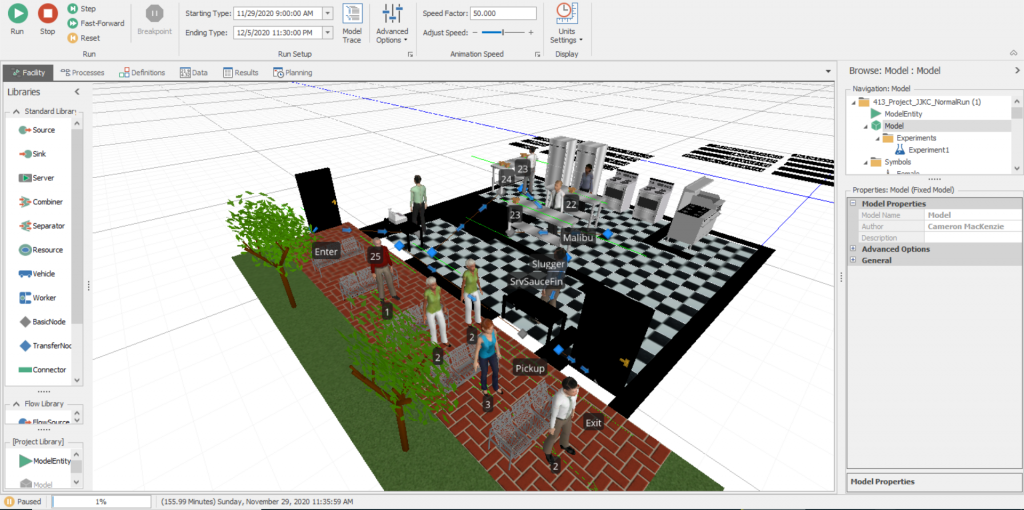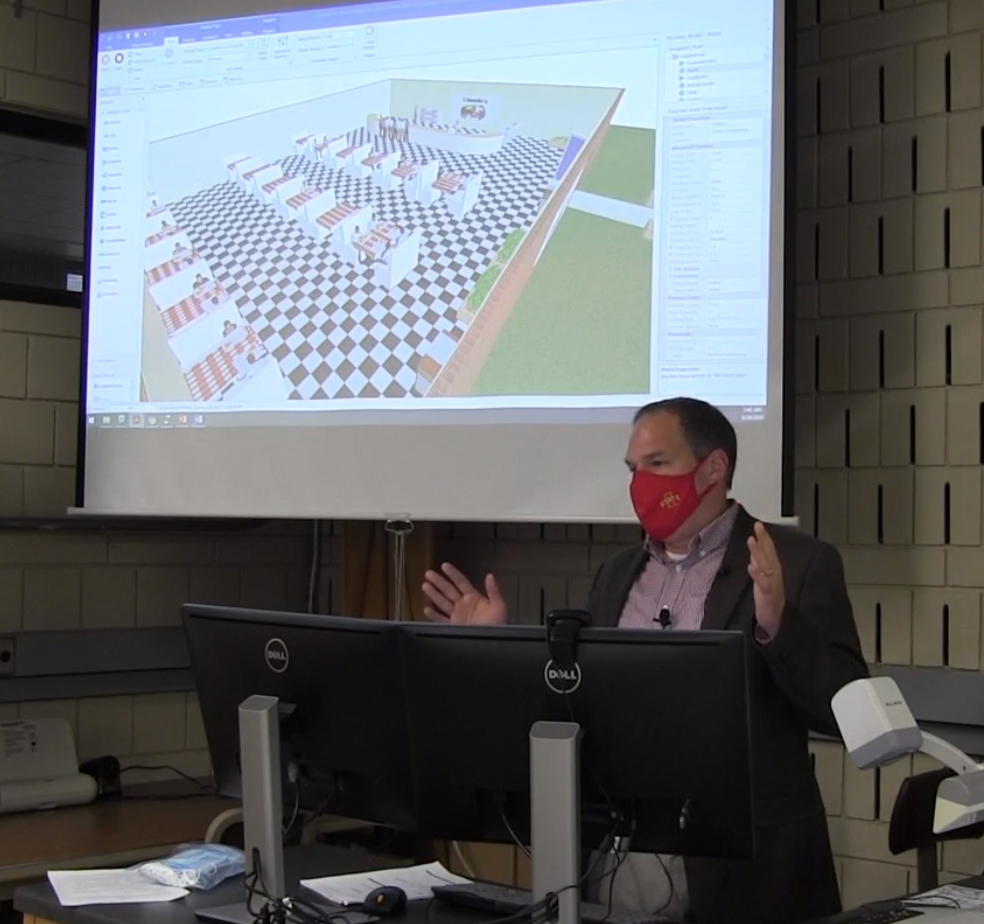
I E 413: Stochastic Modeling, Analysis and Simulation had a new twist this semester because of the COVID-19 pandemic.
I E 413 is part of the industrial and manufacturing systems engineering (IMSE) department’s operations research curriculum and the course focuses on modeling uncertainty, covering the basic concepts of stochastic processes, queueing theory and discrete-event simulation.
“Industrial engineers need to understand uncertainty and account for uncertainty in their analysis,” said Cameron MacKenzie, assistant professor of IMSE and one of the two instructors for I E 413. “Stochastic is a fancy name for uncertainty. This course teaches students how to properly model and incorporate uncertainty in their analysis and models.”
Students in the course use Simio, a computer simulation software program. Each year Simio hosts an international competition, calling for students to create a simulation using their software and analyzing a problem devised by Simio. MacKenzie integrated the contest into I E 413 during the fall 2019 semester, when one of his student teams was named honorable mention, so he decided to make the contest part of the course again for fall 2020.
This semester’s contest had a new spin as participants were tasked with simulating the process and maximizing efficiencies for a barbeque restaurant in the era of COVID-19. The student teams simulated customers coming into the restaurant, ordering, and the food being made and served by the employees, while accounting for adequate physical distancing among the customers. The students then studied ways to improve the restaurant’s operations by analyzing the amount of meat that should be prepared each day and the number of employees that should be working at any given time.

One challenge this semester was that their restaurant could only have a maximum of five people waiting in line at a time, to ensure they distance adequately to reduce the spread of COVID-19. This forced students to reconsider other aspects of their restaurant operation because if the process wasn’t smooth and effective, the simulated customers (just like real life customers) might leave and find another restaurant if they get stuck waiting in line too long.
“I E 413 is known to be a challenging course, and even with COVID-19 adaptations it’s retained its level of difficulty and its high-quality educational merit,” said Cora Hicks, an industrial engineering (IE) student who completed her B.S. in fall 2020. “I believe Professors MacKenzie and Olafsson have taught I E 413 with COVID-19 adaptations extremely well, and I feel I will be able to effectively use both Simio and R [another software taught in I E 413] in my future career to model and simulate systems.”
The structure of the course was also adapted for COVID-19. This semester the course was taught in a hybrid format, meaning lectures were largely delivered online while the computer lab section was taught in-person inside Black Engineering Building. However, the lab sections were smaller (seven sections compared to four in the past) and students were adequately spaced at the workstations.
As the semester progressed, the students wanted more time in the computer lab to develop their simulation. The department was able to accommodate the students in this regard, and MacKenzie said the students did a nice job of sanitizing their stations, wearing masks and adequately distancing themselves.
“It was difficult to not be in a classroom with other students that I could collaborate with,” said Bethany Lippert, a senior in IE. “It took more effort to reach out and ask questions since lectures weren’t live, but the professors were always willing to help if asked. This was a challenging class, but in the end it is very rewarding to look back on all that I have learned.”
To make up for the lack of face-to-face interaction, MacKenzie and Siggi Olafsson, associate professor of IMSE and co-instructor for I E 413, developed an online discussion forum and made themselves available during virtual office hours. Olafsson also offered a live video review session to help students prepare for exams, which the students indicated was helpful to them. MacKenzie said the lack of face-to-face interaction was difficult for him since getting to know students is one of his favorite parts of the job, but he understands it was necessary within the context of the pandemic.
Overall, MacKenzie said he was proud of what he saw from his students despite all of the COVID-19 induced hardships.
“I was impressed with the efforts the students gave toward the project and in the final exam. The students’ projects turned out well, and I commend them for working hard in the class and making it through despite all of the challenges of this semester,” MacKenzie said.
This video was produced in fall 2019, prior to the COVID-19 pandemic.